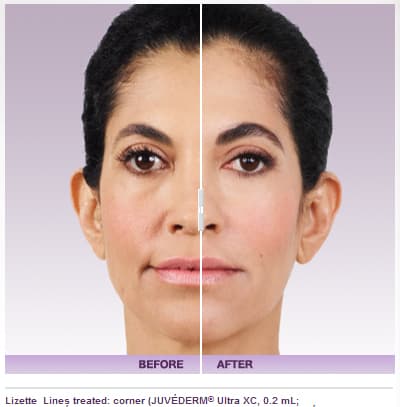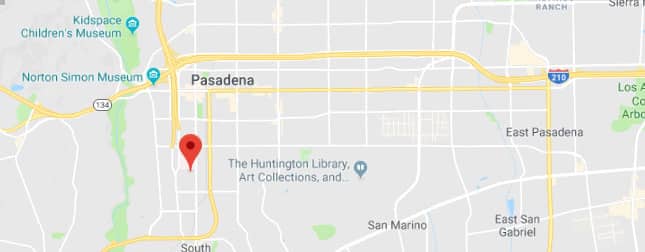 Cheek Augmentation
Cheek Augmentation
As you age, in addition to developing skin laxity, the underlying bone and soft tissue structures lose volume making the face appear flat. As the skin laxity develops and the cheek volume decreases, people develop deeper nasolabial folds. Volume restoration of the cheeks helps restore the youthful appearance of the cheeks and improves the nasolabial folds in a natural manner.
Cheek Fillers & Implants
To augment the cheeks, fillers can be placed as a temporary solution. Cheek implants offer a permanent solution to restore the volume of the cheeks and help lift the midface.
Cheek implants are placed through an incision in the mouth. No exterior skin incisions are made. Stitches are removed after 5 days. As the swelling resolves, patients can enjoy fuller, more natural appearing cheeks
Cheek Implant Enhancement Surgery Overview
Cheek implants are used to add body and contour cheeks that lack definition. People with weak cheek structure, a flat or narrow face, or who have lost cheek definition due to aging can benefit from cosmetic enhancements that cheek augmentation can offer.
Cheek augmentation is a simple and relatively low-cost procedure, which makes this an attractive cosmetic treatment.
Candidates for Cheek Enhancement
Cheek augmentation is typically suitable for people with the below mentioned cosmetic issues:
- Visible nasolabial folds
- Sunken cheeks
- Hollows underneath the eyes
- Poorly defined cheek contours
- Prominent facial folds or jowls
- Loose facial skin
- A downturned mouth
What are Cheek Bone Implants?
Cheekbone implants are made from various synthetic materials ranging from quite rigid to flexible. Cheekbone implants are available in several sizes and shapes.
Most can be individualized to a specific facial structure. Certain cheek implants, such as those comprising silicone, do not assimilate with tissue and can conveniently be removed at a later date.
Procedure
After anesthesia, the surgeon will place tiny incisions underneath the cheek or inside the mouth. In case the incision is made outside the mouth, it will create a small scar. But an incision inside the mouth will not lead to any conspicuous scarring.
The surgeon will develop a tissue pocket to hold the implant. They will cautiously insert the implant through the incision with a sterilized clamp and position it correctly.
After this, the surgeon will assess the cosmetic aspects to ensure that the cheeks are harmonious with other facial characteristics. The surgeon may alter the shape and size of the cheek implant at this stage if necessary. Subsequently, they will carefully suture the implant in place.
The surgeon will use dissolvable or traditional sutures to seal the incision after the implant has been placed in its proper position.
Preparation: Avoiding Smoking and Blood Thinners
In case the patient is a smoker, the surgeon will require them to discontinue smoking for some time before and after the cheek enhancement procedure. In case the patient uses blood thinners such as aspirin or NSAIDs, or specific herbal supplements and vitamin C, they may be asked to stop using these medications for some time.
Cheek Implants Complications and Risks
Cheek implant complications may occur in rare cases. During the cheek surgery, there is a risk of poor response to the anesthesia. The complications that may manifest themselves after the procedure include infection, which can typically be managed with antibiotics. The misplacement of a cheek implant can cause shifting, resulting in asymmetry.
Recovery
After the surgery, the nerve function in the incision sites will gradually be restored. However, the patient may experience a mild sensation in the mid-face region for several days. Most of the swelling will subside in around six weeks. The complete outcomes of the procedure will manifest within a few months as the inflammation resolves fully.
Dermal Facial Fillers to Enhance Cheeks
Juvederm
 Juvéderm is a collection of fillers and different forms are designed to be used in different areas of the face. For instance, Juvéderm Voluma XC is used to add back youthful contours to the cheeks, which naturally flatten over time. It also smoothes moderate-to-deep “parentheses” lines around your nose and mouth (aka the nasolabial folds) and the lines that run from the corners of your mouth toward the chin (the marionette lines). Juvéderm Ultra XC plumps up the lips, as does Juvéderm Volbella XC, which also is used to soften vertical lip lines. Though not totally painless, most HA fillers are infused with the anesthetic lidocaine to minimize discomfort during and after treatment.
Juvéderm is a collection of fillers and different forms are designed to be used in different areas of the face. For instance, Juvéderm Voluma XC is used to add back youthful contours to the cheeks, which naturally flatten over time. It also smoothes moderate-to-deep “parentheses” lines around your nose and mouth (aka the nasolabial folds) and the lines that run from the corners of your mouth toward the chin (the marionette lines). Juvéderm Ultra XC plumps up the lips, as does Juvéderm Volbella XC, which also is used to soften vertical lip lines. Though not totally painless, most HA fillers are infused with the anesthetic lidocaine to minimize discomfort during and after treatment.
Restylane
What it can do: Like Juvéderm, there’s a family of Restylane products designed to treat various, sometimes overlapping, problem areas. The original Restylane smoothes away wrinkles and folds and can be used to add volume to thin lips. Restylane Lyft (formerly Perlane-L), a much thicker gel, is used to correct severe wrinkles and folds like the nasolabial folds, as well as volume loss in the cheeks. It’s also FDA approved to add fullness to the backs of the hands. Restylane Silk is designed especially to enhance the lips, as it is made with smaller particles than the other products.
Sculptra Aesthetic
What it can do: Sculptra initially was used in patients with human immunodeficiency virus (HIV) who had loss of facial fat. Now it’s approved for cosmetic use in people who aren’t infected with HIV to build up cheeks, fill in hollows or sunken areas of the face, and increase skin thickness to diminish the appearance of folds and lines. It is not injected into the lips or used around the eyes.
Radiesse
What it can do: Radiesse is used to treat moderate-to-severe facial creases, such as the nasolabial folds. It also can be used to plump up cheeks and other facial contours. It’s not used on the lips.
For more information about treatments and procedures by Facial Plastic and Reconstructive Surgeon, Dr. Eric J. Yavrouian, serving patients in and around Glendale, Pasadena, Burbank and the Greater Los Angeles, CA area call 818-241-2150 or click here to contact him for a consultation.






